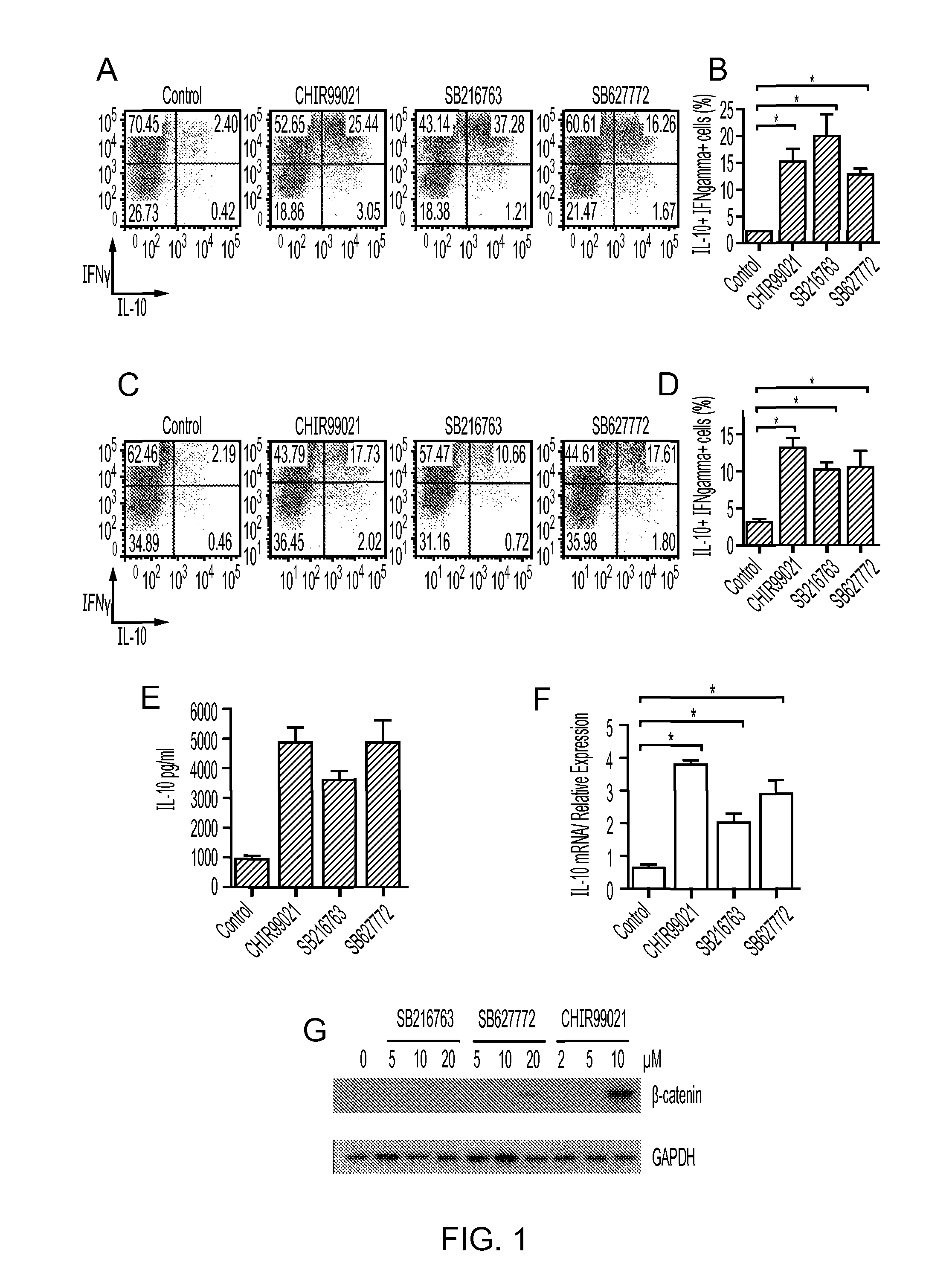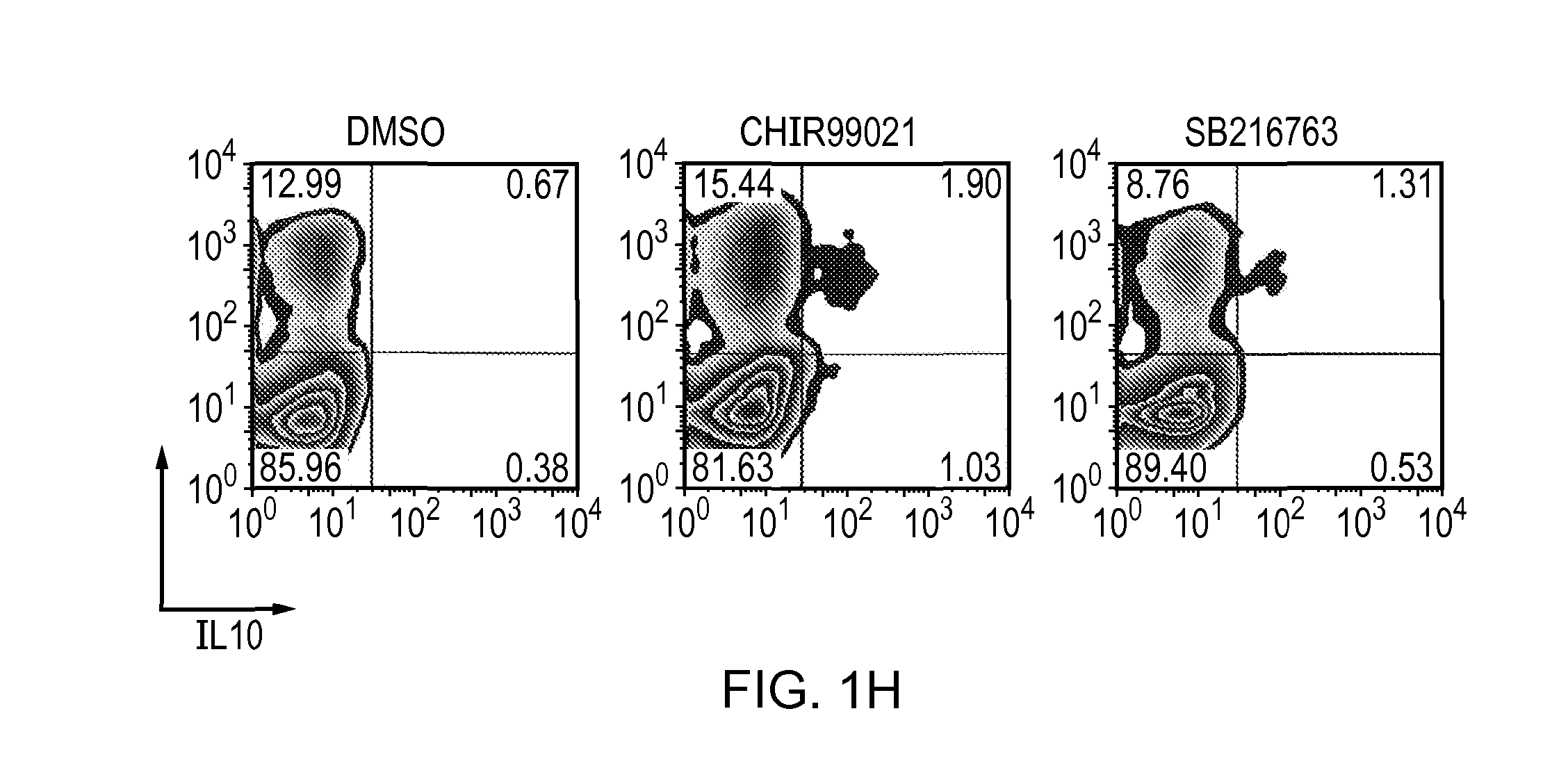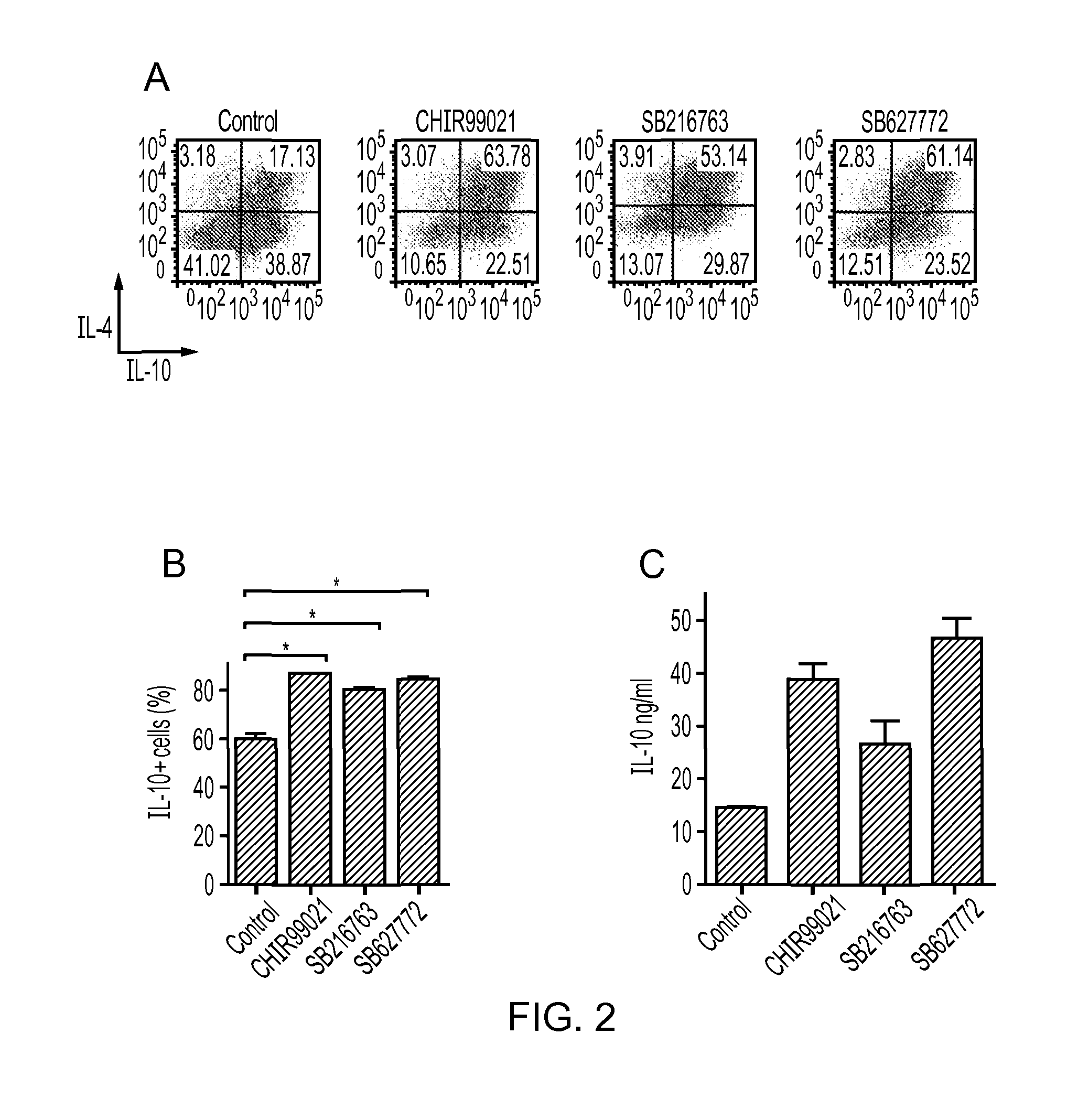Tolerisation-Inducing Composition
a composition and tolerisation technology, applied in the field of tolerisation-inducing compositions, can solve the problems of harmful immune response, severe side effects, etc., and achieve the effect of enhancing tolerance induction and antigen-specific immunotherapy
- Summary
- Abstract
- Description
- Claims
- Application Information
AI Technical Summary
Benefits of technology
Problems solved by technology
Method used
Image
Examples
example 1
GSK-3 Inhibition does not Induce IL-10 in NaïVe T Cells
[0138]CD4+ cells purified from a naive Tg4 spleen were cultured in the presence of 2 μM CHIR99021, 3 μM SB216763 or 0.02% DMSO (vehicle control) with anti CD3 / anti CD28 Dynabeads. Cells were analysed by ICCS on Day 7 after stimulation. The results are shown in FIG. 1H. Intracellular IL-10 levels were not significantly affected by treatment with either GSK-3 inhibitor (CHIR99021 or SB216763).
example 2
GSK-3 Inhibition Enhances IL-10 in Th1 and Th2 Cells
[0139]Splenocytes from a naive Tg4 mouse were cultured in the presence of peptide MBP Ac1-9 (10 μg / ml) and IL12 with IL2 added on day 3 to polarise cells to a Th1 phenotype. On day 7, cells were restimulated with anti CD3 / anti CD28 Dynabeads and 2 μM CHIR99021, 3 μM SB216763 or 0.02% DMSO (vehicle control). Cells were analysed by ICCS on Day 7 after stimulation. The results are shown in FIG. 2D. Intracellular IL-10 levels were increased following treatment with either GSK-3 inhibitor (CHIR99021 or SB216763).
[0140]In a separate experiment, CD4+ cells from Tg4 mice which express TCR specific for the peptide Ac[1-9] of MBP were polarised to a Th1 phenotype and then cultured in the presence of GSK3 inhibitors. Three structurally distinct inhibitors, CHIR99021, SB216763 and SB627772 were used to minimise effects of off-target inhibition. IL-10 protein was found to be significantly increased in cells treated with GSK3 inhibitors in cultu...
example 3
Enhanced IL-10 Production Induced by GSK-3 Inhibition is Independent of IL-10 Secretion by APC
[0142]Splenocytes from a naive Tg4 mouse were cultured in the presence of either: (a) peptide MBP Ac1-9 (10 μg / ml) and IL12 with IL2 added on day 3 to polarise cells to a Th1 phenotype; or (b) IL4 and anti IFNγ with IL2 added on day 3 to polarise cells to a Th2 phenotype. On day 7 CD4+ cells were restimulated with fresh irradiated APCs from either WT or IL10 knockout mice, 2 μM CHIR99021 or 0.02% DMSO (vehicle control) and peptide Act-9 of MBP (10 μg / ml). The results are shown in FIG. 3 (C) and (D). Supernatants were taken in triplicate on day 3 and analysed for IL-10 by ELISA (FIG. 3 (E)). Neither the intracellular level of IL-10 in the APC nor the production of IL-10 by the APC was enhanced during the presentation assay, ruling out the possibility that the enhanced IL-10 observed in Th1 cells in Example 2 was due to enhance IL-10 production by the APC.
[0143]In a separate experiment, Th1 C...
PUM
| Property | Measurement | Unit |
|---|---|---|
| concentrations | aaaaa | aaaaa |
| soluble | aaaaa | aaaaa |
| time | aaaaa | aaaaa |
Abstract
Description
Claims
Application Information
 Login to View More
Login to View More - R&D
- Intellectual Property
- Life Sciences
- Materials
- Tech Scout
- Unparalleled Data Quality
- Higher Quality Content
- 60% Fewer Hallucinations
Browse by: Latest US Patents, China's latest patents, Technical Efficacy Thesaurus, Application Domain, Technology Topic, Popular Technical Reports.
© 2025 PatSnap. All rights reserved.Legal|Privacy policy|Modern Slavery Act Transparency Statement|Sitemap|About US| Contact US: help@patsnap.com



